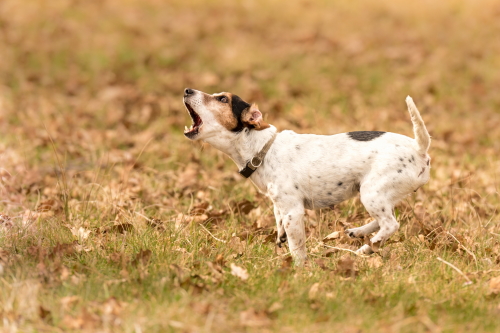Can you recognize when your dog is feeling overwhelmed or overstimulated? Do you know what to do when it happens?
Stress signals are indicators dogs use when they are experiencing extremes of emotion and energy. They include: barking, jumping, whining, drooling, panting, pacing, rolling over, and escaping. Generally, they are the things that annoy or embarrass you about your dog.
If you find yourself remarking “I don’t know why he is doing that” or “I am so sorry! He has never done that before”, you are likely seeing stress signals.

Stress related panting - tense eyes, ears drawn back. Tongue tight and thick, neck held high.
Stress can be from excessive positive or negative energy. For instance, if your dog barks with extreme happiness when a friend arrives at the door, or if your dog barks with anxiety when you leave him alone - both are potential symptoms of stress.

Barking - stress indicator. Like "steam escaping from the kettle", excess energy comes out through sound. Excitement, anxiousness - energy builds up.
Remember: in this discussion, stress is simply an excess of energy or emotion and can arise from both good and bad experiences; arriving at the dog park, having their nails trimmed, seeing their favourite person, hearing thunder during a storm.
Stress signals are involuntary actions that are very difficult for your dog to control. If his behaviour is over-the-top and you cannot stop him from doing it, even by teaching obedience, you are likely observing stress signals in your dog.

Jumping - stress indicator. Bouncing repeatedly or clinging to people.
A helpful approach is to teach calming exercises – targeting the core issue. When offered a peaceful solution and the necessary support, many dogs let go of their stress signals as they learn to handle more situations with calm and ease.
Learning to listen to your dogs’ stress signals can help you understand how and when to help your dog become a more peaceful member of your family. By teaching calming exercises, you provide the support your dog needs to diminish their stress signals. Together you can build a more peaceful and enjoyable relationship.
